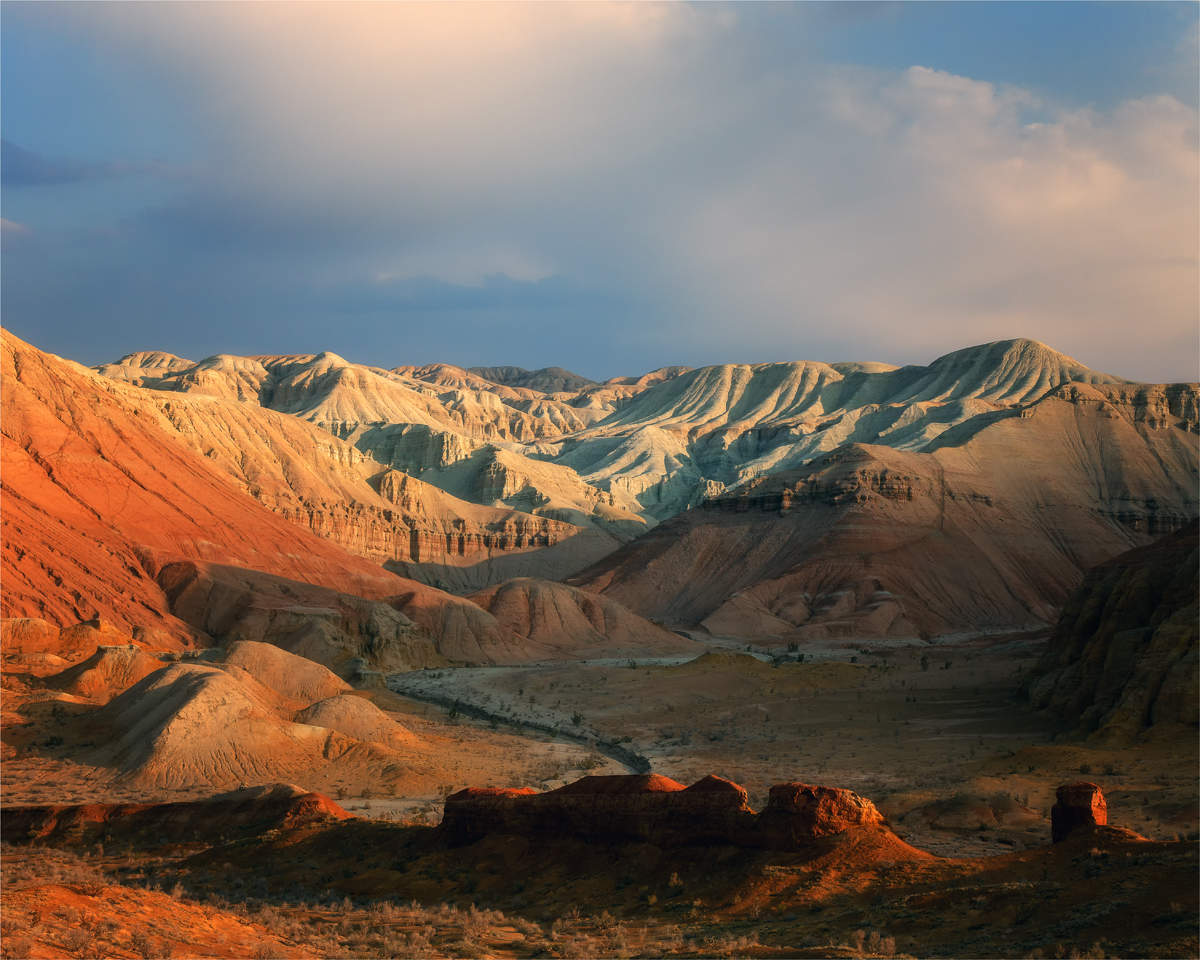Kazakhstan has an impressive number of natural attractions, and one of them is the Altyn-Emel National Park. Mountainous landscapes, clean air, ancient cultural monuments are the ideal place for eco-tourism.
The national park appeared in 1996 in the south-east of the country. The main purpose of creating Altyn Emel is the preservation of flora, fauna, natural complexes and cultural monuments in the area.
The name of the park translates as “golden saddle. A Mongolian legend says that while crossing the valley, Genghis Khan looked at the mountains covered with yellowing grass at sunset and exclaimed, “Oh, the golden saddle! And so the name stuck.
The first thing that amazes tourists in Altyn Emel is unique plants and animals, some of which are included in the Red Book. A lot of attention is attracted by Przewalski’s horses, which were brought from Germany at the beginning of the century.
What to see in Altyn Emel National Park?
When you come to the national park for the first time, be sure to consider the natural and historical monuments, including:
- Singing Barchan. A natural monument of two sites located on a rocky plain. One of its parts, the southern mountain, is not hospitable. No grass grows on the barchan of crystalline sand, and because the slopes are too steep, it is impossible to climb it. The reasons for the formation of the barkhans is an increased westerly and easterly wind: the sand masses brought by it collided at the junction of the mountains. Because of the movement of wind and sand, a strong noise is formed, similar to the sound of a jet engine. Singing Barkhan is included in the list of the Wonders of the World of Kazakhstan.
- Aktau Mountains. This is the seabed, which today are gorges and canyons with multicolored layers of rocks: red, green, white, mottled. According to paleontologists in the Cenozoic era, swamp rhinoceroses, crocodiles, deer, poplars and oaks grew here.
- Willow. The most remarkable thing about it is its age: 700 years. Local tribes consider the willow sacred: to embrace the hands of its trunk, it takes a few people. There are other reasons for worshipping the willow. Firstly, the Kazakhs believe that whoever causes evil to the tree will die instantly. Secondly, the legend says that once under this willow the great Genghis Khan liked to rest. And thirdly, there are springs of radon water, which is considered therapeutic: will save from any disease.
- Beschatyr. This is 30 mounds, which formerly housed the tombs. The higher the mound, the more distinguished people were buried there. The small ones were for warriors with weapons, the medium ones were for distinguished warriors and nobility, and the large ones were for the leaders, rulers and kings. The constructions were connected by a tunnel principle.
- Oshaktas. The stone steles are two-meter high boulders. According to the legend, the steles had a cauldron on them, which was used to cook dinner for Genghis Khan. Another version has it that the steles were used as signal cannons: as soon as enemies appeared on the horizon, warriors lit fires.
- Petroglyphs. Most of the petroglyphs depict animals, hunting and battle scenes, everyday life, as well as Buddhist inscriptions. Almost all the paintings belong to the Bronze Age or Iron Age.
- The trip to Altyn Emel is of an eco-educational nature. There are hiking trails, gazebos, resting places, and viewing platforms in the national park.
With Minzifa Travel you can not only visit Altyn-Emel, but also learn more interesting facts about natural monuments of Kazakhstan. For more information please contact us on WhatsApp or e-mail travel@minzifatravel.com. We look forward to your calls and messages!
We’re on social media:
